Better All The Time #41
Let's set the mood with a little harp music, shall we?
Hope you all enjoy this special Christmas and Babymoon edition of Better All The Time. The Specu-Wife and I are off to Hawaii for Christmas, our last getaway as a more or less independent couple (with my daughter grown and in college) before the arrival of our new baby daughter in April.
I'll be on hiatus for a week or so. Here's wishing you all a wonderful and joyous holiday season.
Aloha, and Meli Kelikimaka!
 | ||
|
Several items in this edition come from the list of the top ten scientific discoveries of the 2008 as chosen by the editors of the journal Science. Can you spot them? The items from that list which were covered at the Speculist are presented here pretty much as originally published. This will be our final regular edition of Better All the Time for 2008. However, we will be presenting an end-of-year roundup of many of the good news stories we have covered so far this year, so stay tuned.
|
I am eager to see the development of cell therapies derived from pluripotent stem cells. We all have parts that are wearing out. I see people around me with chronic knee pain, back pain, and other joint and connective tissue problems and think how much better their lives will be once we can repair their worn out knees, spinal disks, elbows, shoulders, and other worn out mechanical parts. I look at people who need to restore their receded gums, replace tissue scarred from burns, or who just have aged and easily scratched skin and think how better off they'd be with some rejuvenated tissues. I think about people who suffer from failing hearts, kidneys, or livers and imagine a future where we can grow replacement organs from stem cells. I want that future to arrive as soon as possible.
Item 1
Seeing is Believing
When I was a kid, we didn't know for sure whether there were any planets outside the solar system. It seemed likely that there would be planets out there, and one could assert that it was highly probable that they were out there, but we didn't for sure.
Then, suddenly, we did know. Astronomers began to crack the code, identifying the presence of planets by the way stars wobbled and other giveaway behaviors. So then there were a few known planets outside the solar system, and before long there were a few dozen -- to the point where now most people probably couldn't tell you (within 50, or even 100) how many extrasolar planets we have discovered.
Do you know? Take a look.
Surprised?
See, we have discovered hundreds them, using various clever indirect detection methods. But no one has ever actually seen an extrasolar planet. Until now, that is:
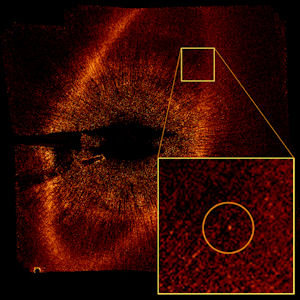
And then, one the same day we see one, we see two at the same time.
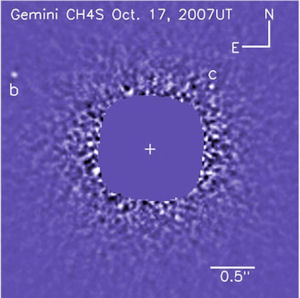
The Good News
Our ancestors waited thousands of years, or even thousands of generations, to get answers to these kinds of questions. Today, so many discoveries are being made at such an advanced pace that we can scarcely keep track of it all. We live in amazing times!
Item 2
Scientists
Decode Set of Cancer Genes
For the first time, researchers have decoded all the genes of a person with cancer and found a set of mutations that may have caused the disease or aided its progression.
Using cells donated by a woman in her 50s who died of leukemia, the scientists sequenced all the DNA from her cancer cells and compared it to the DNA from her own normal, healthy skin cells. Then, they zeroed in on 10 mutations that occurred only in the cancer cells, apparently spurring abnormal growth, preventing the cells from suppressing that growth and enabling them to fight off chemotherapy.
The Good News
Since most cancer is not inherited, understanding the mutations that contribute to cancer in an individual provides hope for providing personalized cancer therapies based on the patient's genetic profile. This could be the key to understanding why some therapies work better than others for certain patients, and helping to get all patients onto the course of treatment best suited for the way their bodies are likely to react.
Moreover, a broader understanding of the "cancer genome" can only lead to a better understanding of cancer and the development of even more effective treatments for it.
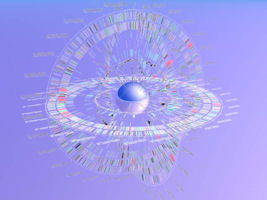
Item 3
Iron
Exposed as High-Temperature Superconductor
For more than 20 years, the only known superconductors that worked far above liquid-helium temperatures were a few dozen compounds—virtually all based on copper. Now scientists have discovered the first high-temperature superconductors based on iron. These novel materials could help unravel one of the biggest mysteries in science—how exactly the high-temperature versions work.
The Good News
Superconductors have dozens, if not hundreds, of practical applications -- from transportation to energy to medical technology. And now we have twice as many ways of making them as we had before. That could mean twice as many ways to realize those opportunities.
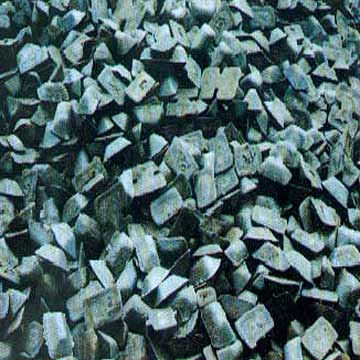
Item 4
Hydrogen on the Cheap
In an edition of Better All the Time from earlier this year, Stephen Gordon commented:
I do have one prediction about hydrogen. We will find much more efficient ways to get it than water electrolysis. For example, green plants get hydrogen from water as part of the process of photosynthesis. This is done very efficiently (and why would nature bother to get hydrogen from water if hydrogen were useless?). We are beginning to understand how this works and we might use that method to get hydrogen.Or, we might use John Kazius' microwave method.
Or there might be some other way that that we won't know about until... today. According to Technology Review, scientist have known since the 70's that a material called titania serves as a catalyst for breaking down water into hydrogen and oxygen in the presence of light - specifically ultraviolet light.
The problem is that sunlight is only partly UV. The process would be much more efficient if titania split water with visible light too.
This process is said to be as cost effective as the current cheapest way of obtaining hydrogen - from natural gas. But since the natural gas process releases a significant amount of CO2 and this method releases only oxygen, this is the environmentally friendly approach.
One way this could really be useful is in storing solar power for night use. These dishes could produce hydrogen during daylight for powering fuel cells 24/7. Nanotech to the rescue. Scientists with the startup company Nanoptek have just announced that putting titania on dome-like nanostructures stretches the bonds between the titania atoms so that it begins splitting water with visible light. This process is said to be as cost effective as the current cheapest way of obtaining hydrogen - from natural gas. But since the natural gas process releases a significant amount of CO2 and this method releases only oxygen, this is the environmentally friendly approach. One way this could really be useful is in storing solar power for night use. These dishes could produce hydrogen during daylight for powering fuel cells 24/7.

Item 5
Making
"good" fat from muscle and vice versa
A surprise discovery – that calorie-burning brown fat can be produced experimentally from muscle precursor cells in mice – raises the prospect of new ways to fight obesity and overweight, say scientists from Dana-Farber Cancer Institute.
Reporting in the Aug. 21 issue of the journal Nature, the researchers demonstrated that brown fat, which is known as the "good" form of fat – so called because it burns calories and releases energy, unlike "bad" white fat that simply stores extra calories – can be generated from unspecialized precursors that routinely spawn skeletal muscle.
The team led by Dana-Farber's Bruce Spiegelman, PhD, showed that a previously known molecular switch, PRDM16, regulates the creation of brown fat from immature muscle cells. They also determined that the process is a two-way street: Knocking out PRDM16 in brown fat cells can convert them into muscle cells.
The Good News
At one time, it was believed that strength training exercises such as weight lifting could be used to convert body fat into muscle. Later, as a better understanding of human physiology made its way into the parlance of weightlifting, the word "convert" was swapped out with the word "replace." Sure, you can lose fat and build muscle, but the two things aren't connected. Fat, after all, can't really become muscle, and muscle can't become fat.
Only now we know it can. Of course, the real breakthrough here will be to find a way to turn white fat cells into brown fat cells, and then make that into muscle. Brown fat already serves a useful purpose, so there's less reason to want to turn it into muscle. And, of course, that reverse process of turning muscle into fat -- I'm having a harder time seeing who would want to do that, but I'm sure there are some potential practical applications.
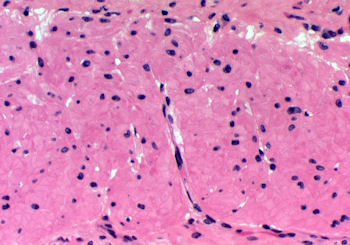
Item 6
Reprogramming
Cells
Last November we learned that adult skin cells could be converted to pluripotent stem cells. There was a problem though. The process used a virus that inserted its genes into the new stem cells - obviously not usable therapeutically.
A new technique has already been developed. The new vector no longer inserts its DNA in the resulting stem cell. This is wonderful news. It could be the dawn of a new era of personalized medicine.
Moving Ahead
This technique promises eventually to replace more conventional stem-cell therapies. The primary advantage is that the pluripotent cells produced will be an exact immunilogical and functional match for the patient being treated. Another advantage is that no embryos are destroyed when producing these cells, so any ethical debate is sidestepped. It now seems certain that producing pluripotent cells from mature tissues is the way forward for stem cell research.
We're pleased at the Speculist that we have been predicting this shift in emphasis for several years, although in the process we have been accused of being (on the one hand) anti-life monsters who were okay with stem cell research until a better alternative could be found and (on the other hand) anti-science luddites for not being 100% behind stem cell research with no regard to alternatives. When you get attacked by both sides, you must be doing something right.
Item 7
Forget Corn
From the Algenol website:
Algenol’s DIRECT TO ETHANOL™ technology can produce ethanol at an affordable price.
1. Algenol can sell ethanol at a price that is cheaper than any other fuel all across the United States.
2. Algenol produces ethanol at a rate of over 6,000 gallons per acre per year.
• (Corn produces around 370 gallons per acre per year).
• (Sugarcane produces around 890 gallons per acre per year).3. Algenol will exceed its target 10,000 gallons per acre per year by the end of 2008
The Good News
There's a good deal of talk about ethanol being more or less discredited as a viable fuel because production of it requires competing with food supplies. If the rates of production that Algenol describes above are anywhere near accurate, ethanol starts to look a lot more viable.
Especially since nobody was going to eat that algae, anyway, were they?
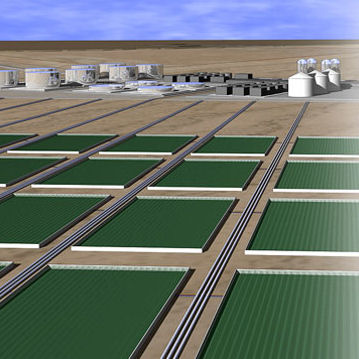
Scientist and visionary Ron Ace has patented a technique for combating global warming that is quite a bit simpler than most of the remedies proposed to date. Basically, he says we just need to spray a whole lot of water into the air -- especially in the Northern Hemisphere. The extra water vapor will take care of the rest.
"The Earth has a giant air-conditioning problem," he said. "I'm proposing to put a thermostat on the planet."
Although it might sound preposterous, a computer model run by an internationally known global warming scientist suggests that Ace's giant humidifier might just work.
Kenneth Caldeira , a climate scientist at the Carnegie Institution's Department of Global Ecology at Stanford University , roughly simulated Ace's idea in recent months on a model that's used extensively by top scientists to study global warming.
The simulated evaporation of about one-half inch of additional water everywhere in the world produced immediate planetary cooling effects that were projected to reach nearly 1 degree Fahrenheit within 20 or 30 years, Caldeira said.
"In the computer simulation, evaporating water was almost as effective as directly transferring . . . energy to space, which was surprising to me," he said.
The Good News
A geo-engineering solution to climate change doesn't have to be high-tech in order to be effective. What Ace is talking about doing is one of the lowest-tech solutions to the problem imaginable, but that only means that we already have the capability to implement it, should we choose to do so. And it's important to note that Ace is in good company. Freeman Dyson wrote a while back that global warming might be most effectively addressed by some fairly simple and relatively easy-to-implement agricultural practices.
What if the solution to climate change turned out to be something as simple as the proposals from Ace and Dyson? Would that be so terrible?

This Machine Might Save the World
Two desktop-printer engineers quit their jobs to search for the ultimate source of endless energy: nuclear fusion. Could this highly improbable enterprise actually succeed?
The source of endless energy for all humankind resides just off Government Street in Burnaby, British Columbia, up the little spit of blacktop on Bonneville Place and across the parking lot from Shade-O-Matic blind manufacturers and wholesalers. The future is there, in that mostly empty office with the vomit-green walls -- and inside the brain of Michel Laberge, 47, bearded and French-Canadian.
According to a diagram, printed on a single sheet of white paper and affixed with tape to a dusty slab of office drywall, his vision looks like a medieval torture device: a metal ball surrounded on all sides by metal rods and bisected by two long cylinders. It's big but not immense -- maybe 10 times as tall as the little robot man in the lower right corner of the page who's there to indicate scale.
What Laberge has set out to build in this office park, using $2 million in private funding and a skeletal workforce, is a nuclear-fusion power plant. The idea seems nuts but is actually, he says, not at all far-fetched. Yes, he'll admit, fusion is generally considered the kind of nearly impossible challenge undertaken only by huge universities or governments. Yes, fusion has a stigma to overcome; the image that it is fundamentally bogus, always and forever 20 years away, certainly doesn't help. Laberge would probably even admit that the idea of some Canadians working in a glorified garage conquering one of the most ambitious problems in physics sounds absurd.
But he will also tell you that his twist on a method known as magnetized target fusion, or MTF -- to wildly oversimplify, a process in which plasma (ionized gas) trapped by a magnetic field is rapidly compressed to create fusion -- will, in fact, work because it is relatively cheap and scalable. Give his team six to 10 years and a few hundred million dollars, he says, and his company, General Fusion, will give you a nuclear-fusion power plant.
The Good News
All energy on earth ultimately comes from the glorious fusion reactor some 93 million miles away that we like to call the sun. Fusion is the future of energy production and use on this planet. Ultimately, we're going to figure out a way to produce our own fusion reactions and provide ourselves with limitless energy, or we'll get so good at tapping into the aforementioned super-fusion-generator in the sky that it won't matter.
Laberge may just be chasing a fantasy, or he might really be on to something. It certainly is interesting that, like Bussard before him, Laberge is pursuing his goal more or less independently, certainly without any major government backing such as one would expect for an undertaking of this sort. A few years ago, you didn't hear about anyone working on fusion energy independently. And now you hear about it -- if not frequently, at least every now and then.
Of course, the fact that more and more people are pursuing the problem in more and different ways doesn't guarantee that we'll get to fusion power any time soon, but it can't hurt now, can it?
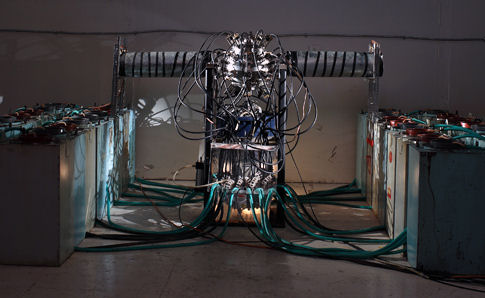
Better All The Time was compiled by Phil Bowermaster, with some help from Stephen Gordon and Michael Darling. Happy holidays, everyone, and live to see it!



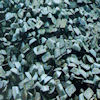
 >
>
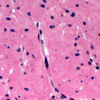
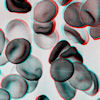
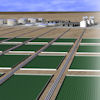

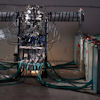
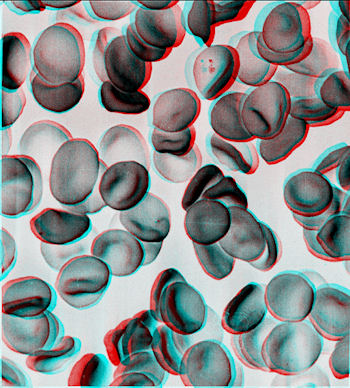


Comments
I did some back of the envelope calculations on the steam punk fusion engine and found to my amazement that it could work.
Posted by: M. Simon | December 24, 2008 09:40 AM
You put a lot of work into this. Thank you.
Posted by: David Govett | December 24, 2008 05:39 PM
I love the idea of Ace's giant sprinkler system to cool down the planet, and that's great to know about the adult stem cell technique. More about algae as the best biofuel here:
http://ngm.nationalgeographic.com/2007/10/biofuels/biofuels-text/6
Posted by: Marilyn Terrell | December 25, 2008 07:17 AM
Very interesting article, i have bookmarked your blog for future referrence. Best regards
Posted by: Simonn | March 21, 2009 10:00 PM
I enjoy reading your blog. Thanks.
Posted by: SexyGir | April 23, 2009 06:39 PM